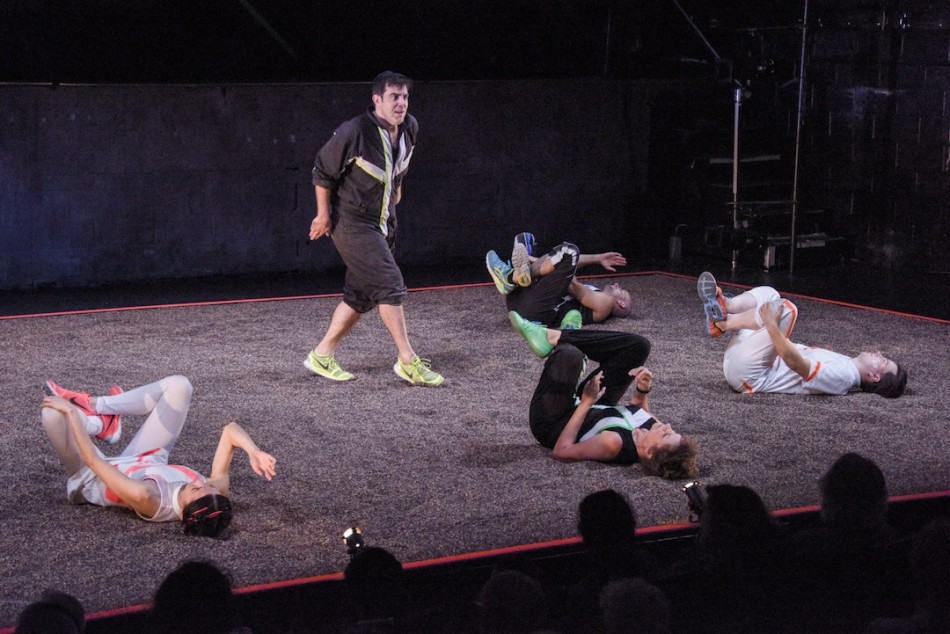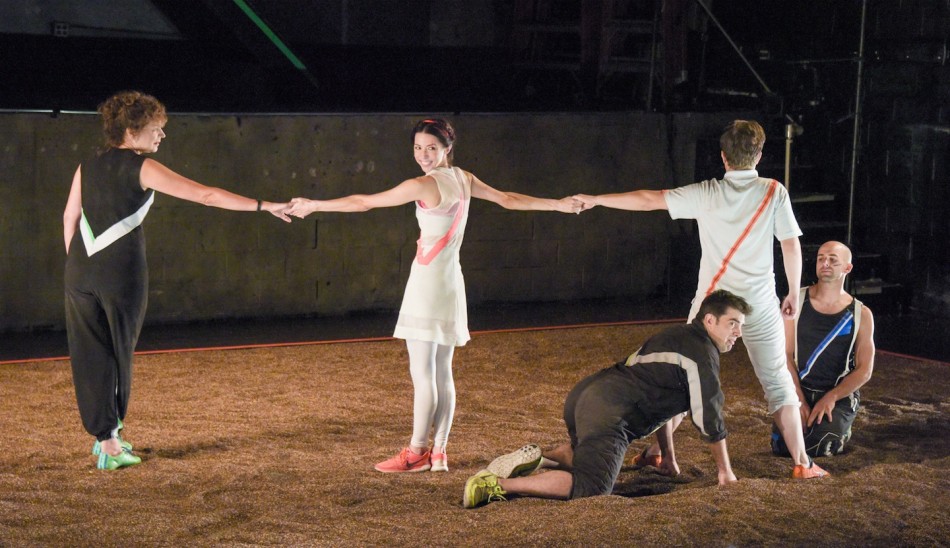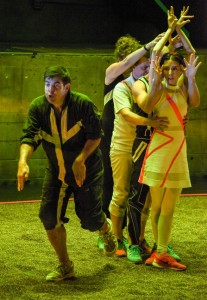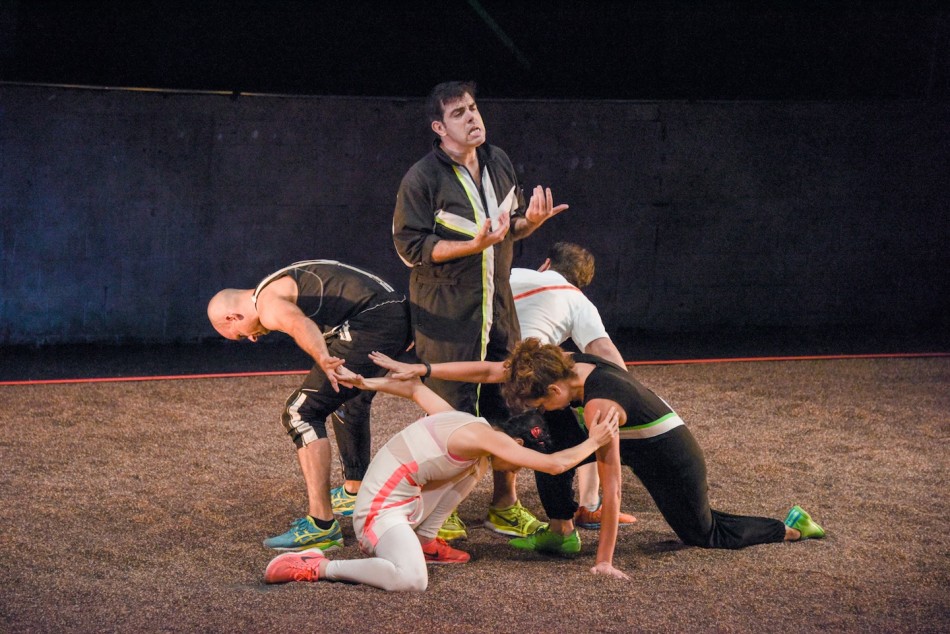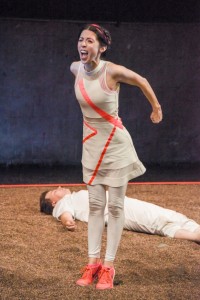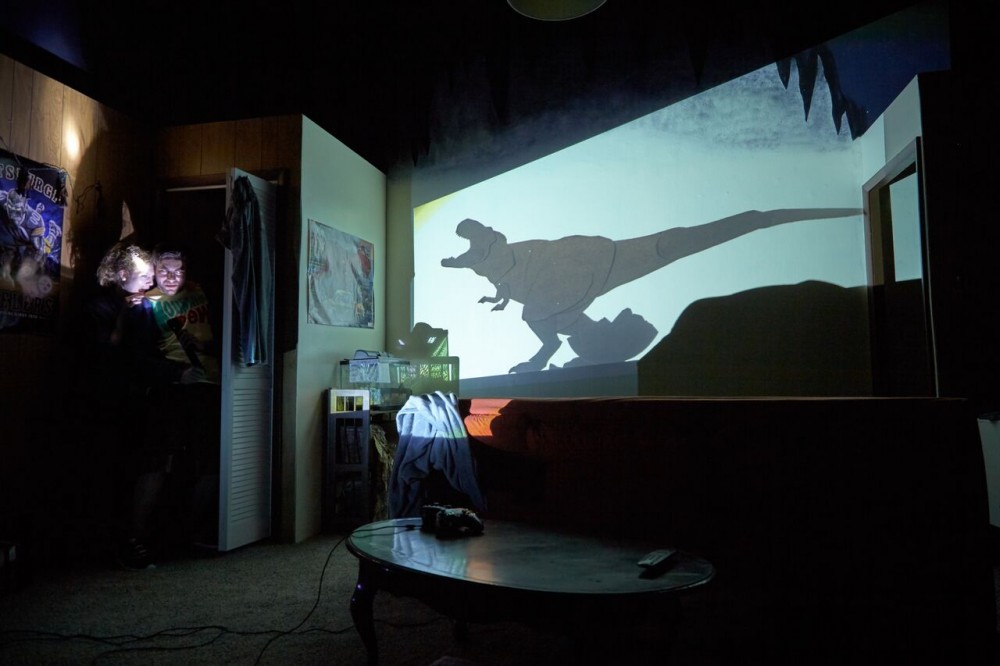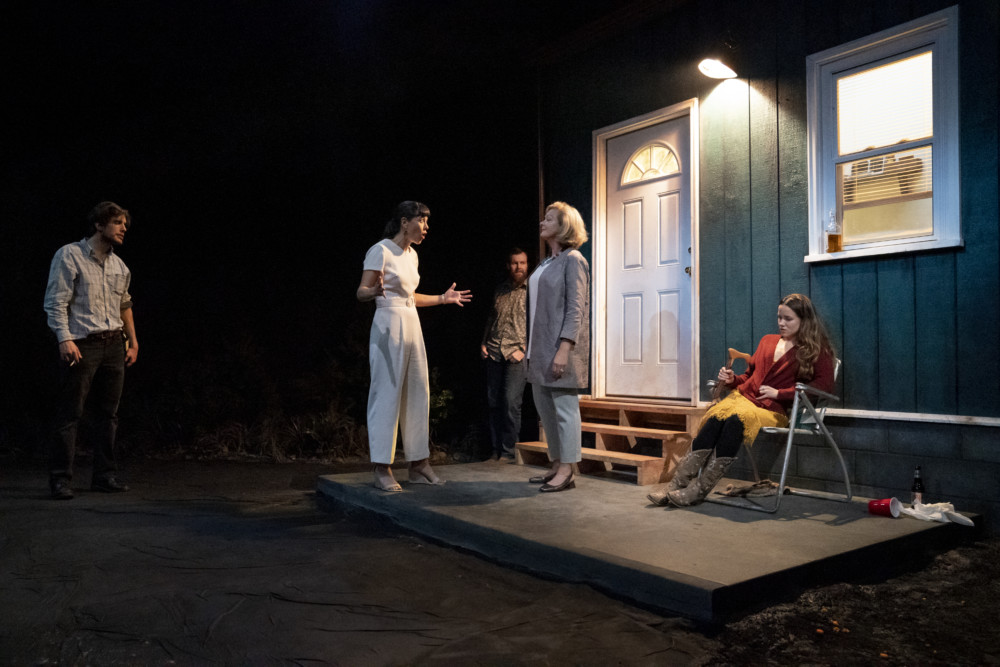by JK Clarke
Watching an Eric Tucker-directed Shakespeare play, one tends to realize two things: first, that the players have such a comprehensive command of the text that it almost feels as if it’s being performed in contemporary English; and second, that there are elements of the play that have never ever occurred to you before. Tucker (who happens to be the artistic director of the highly acclaimed Bedlam theatre company), has stirred the theatrical pot several times in the last few years with innovative productions of Hamlet, Twelfth Night and Saint Joan. What’s most notable is the minimalism of each of these productions: bare sets; unremarkable costumes; and just four or five actors in plays with upwards of 25 characters. This time he’s done it with five actors performing the beloved A Midsummer Night’s Dream. The play (which is co-produced by The Pearl Theatre Company and the Hudson Valley Shakespeare Festival, where it ran this summer) is as appropriately magical and surreal as any production of this (literally) enchanting play you’ll ever see.
What makes A Midsummer Night’s Dream so special is its multiple storylines and character sets that ultimately meet up, but not in the formulaic way of most of Shakespeare’s comedies. There are no twins, no implausible accidental meetings, no unexplained changes of heart (which do occur, but are induced by the use of magic . . . or drugs). But that’s also what makes it difficult to perform with a drastically abridged cast. The thrust of Midsummer is overlapping stories. First of the elopement of Hermia with her love, Lysander, despite her father’s having promised her to Demetrius. Her refusal of Demetrius (who is loved, unrequitedly, by Helena) is grounds for execution under the law of the kingdom (which the soon to be wed Duke Theseus attempts to mitigate). Helena tells Demetrius of Hermia’s escape and they chase the lovers into the forest. Story number two is that of Titania and Oberon, king and queen of the fairy world, who are quarreling over custody of an Indian child; Oberon enlists the nefarious aid of Puck, a fairy, to humiliate Tatiana by using magic to make her fall in love with a beast. And finally, a group of laborers (the Mechanicals) from Athens, who’ve entered the forest to rehearse a play for the Duke’s nuptials. Oberon and Puck interfere with the fleeing lovers (trying, unsuccessfully at first, to make Demetrius love Helena) and transform one of the Mechanicals (Bottom) into an donkey and make him the object of Tatiana’s lust. All of these events mount into a moment of near chaos that is resolved and culminates with the Mechanicals’ bumbling performance of their play before a happy, yet critical, wedding party.
Once again, minimalism is the hallmark of this production. John McDermott’s set is a gravel pit in front of a cement wall and bare staircase and open stage sides, revealing the structural elements of the building. Eric Southern’s brilliant lighting of laser-like neon purples, reds, yellows and blues mix dreamily with the stage and the actors outfits (Jessica Wegener Shay), which can only be described as a mashup of mobster track suits and athletic wear in black or white, with bold neon or white stripes dashing the length of the outfit.
While the staging elements are impactful, they force focus on the performances of the five actors, who pantomime their accoutrements (wings on fairies represented by hands flapping at the back; a wall represented by actors embracing) so nicely that we don’t question what they are. Even more ingenious is the demarcation of scene changes: the cast members hum “The Girl From Ipanema” in unison, à propos of nothing. While every performance was terrific, Jason O’Connell, who plays Puck, among other roles, was beyond brilliant, injecting imitations of classic personalities into his characters. His Marlon Brando (as the Godfather, et al) was so on the nose that he should considering doing a Brando-themed one-man show. Sean McNall brought to mind (SNL’s) Bill Hader’s comical, rich-baritone Spanish announcer; Mark Bedard evoked a young Stanley Tucci, with elements of sternness and comical confusion; Joey Parsons’ lithe dancer’s movements and wide smile was perfectly suited for the ethereal fairy roles, lovelorn Hermia and the sexiest wall ever performed; and Nance Williamson rounded out the cast with character shifts so extreme that she looked like a different actor at times.
A single viewing doesn’t do this play justice (nor does a concise review). There are so many subtle, brilliantly played moments that it’s difficult to catch them all the first time around. But there is a caveat: it helps a great deal to have more than a passing familiarity with the play. It’s advisable to read, at a minimum, a synopsis before seeing it. But that’s advice I would give to anyone seeing any Shakespeare production anywhere. It just helps. In this case the more familiarity you have, the more you’re going to enjoy the play. There’s no question about it, for it favors the well prepared audience member. To illustrate, the night I saw the play, several people left, frustrated, at intermission (including a reviewer!), yet the performance received a standing ovation.
I came away from A Midsummer Night’s Dream more enraptured with the play itself than I ever thought possible. I’ve always liked it, but never felt as enchanted. Tucker (with the aid of the brilliant dramaturge Kate Farrington) and the casts’ remarkable production brought out every nuanced layer of the play, from comical to romantic, thus demonstrating what an absolutely brilliant piece of writing it is. But the writing relies on a powerful production and Tucker (along with the terrific cast) brings it. The play ends with Puck (played by each of the cast members here) famously apologizing to the audience, and suggesting, lest “we shadows have offended . . . you have but slumbr’ed here” and the whole thing was a dream. Perhaps that warning was necessary for a time when talk of fairies and the supernatural might have been blasphemous, but there’s no way you’d want to sleep through this magical production.
A Midsummer Night’s Dream. Through October 31 at the Pearl Theatre Company (555 West 42nd Street, between 10th and 11th Avenues). www.pearltheatre.org
[Correction: We a previous version of this post, we inadvertently swapped the names of Mark Bedard and Jerry O’Connell. Theater Pizzazz regrets the error.]


